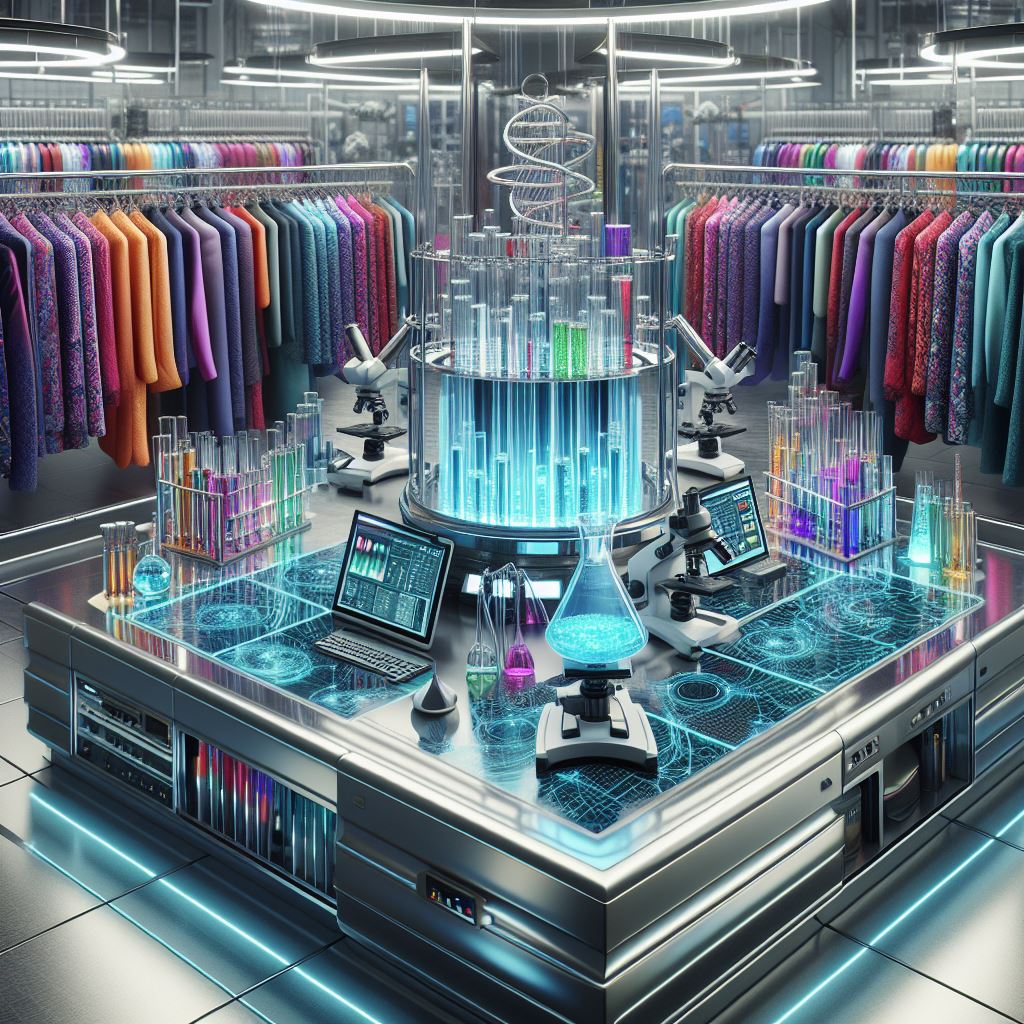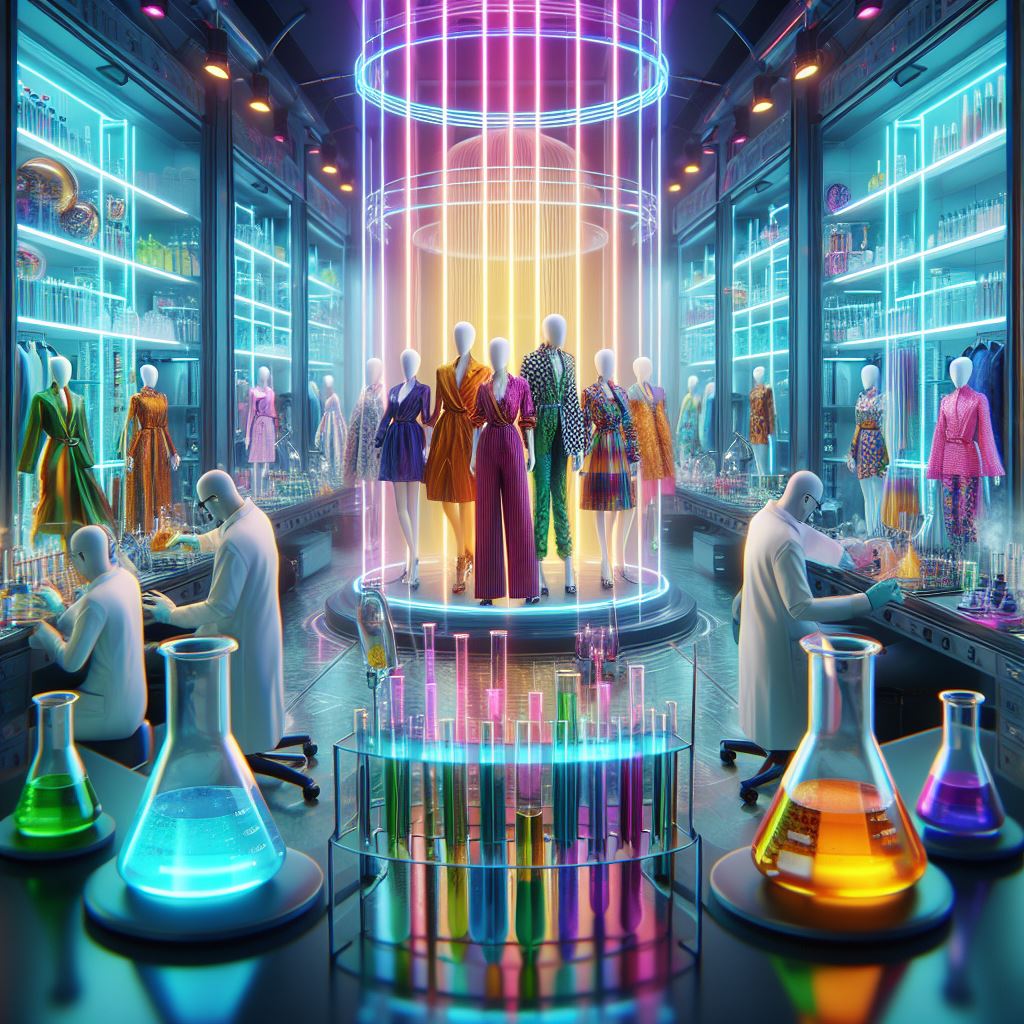
With the upcoming fashion season, trend forecasts become a crucial aspect of the industry and captivate consumers, guiding them towards the cutting edge. Yet, it’s also a time when we witness the revival of past trends, which come and go like the pulse of waves.
Much like Pokémons, fashion trends tend to evolve into something (not so) different after decades. However, they can also regress into a less-appealing, goblin-mode version of the original trend. Some trends can become radical, like the ‘core’ version of the original trend, and be influenced by different industries, leading to a fusion of styles. Despite the many variables involved, fashion trends are very much predictable.

This is one of the outputs we received when we tasked the Image Creator from Microsoft Designer to generate an array of images illustrating the topic of this article. Courtesy of the author
Algorithms play a big role in that, and AI is there to help predict patterns. According to Priscille Biehlmann’s article in The Guardian, “AI tools can detect patterns within large datasets of runway show images, social media posts, search data, and online and in-store sales data – which can help forecasters spot emerging trends more accurately and, crucially, more quickly.”
This technology didn’t just pop up overnight; artificial intelligence has been around for a decade. However, it’s only recently that fashion trend forecasting companies have begun to disclose their AI-infused predictions openly and proudly.
View this post on Instagram
Spate, a company that uses data science to predict trends, has launched the first consumer trends report that leverages Generative AI to analyse billions of search signals across 10+ categories.
The Fashion Trend Cycle: From Birth to Rebirth
The rise and fall of fashion trends can be anticipated with ease as they typically follow a precise path over time.
When trendsetters – such as influential designers, celebrities or fashion influencers – introduce a novel style, early adopters jump on it. As soon as the prime movers embrace the new trend, they spread the initial buzz and curiosity.
Fashion magazines and blogs act as amplifiers, reaching a broader audience. As the trend becomes popular, fashion retailers and manufacturers start producing items that embody the trend, and people start wearing them.
When a trend reaches mainstream adoption, it is considered to have peaked and is no longer trending. It becomes outdated and ‘so last season’ during the saturation and decline phase. That fashion item, colour or shape is no longer considered fashionable.
But it’s not the end of the road for our beloved trends! Vintage and nostalgia are back in vogue, making old trends resurface. Retro styles are appealing to younger generations, and it’s up to them to revive old trends with a fresh perspective.

This is one of the outputs we received when we tasked the Image Creator from Microsoft Designer to generate an array of images illustrating the topic of this article. Courtesy of the author
Because trends these days rise and phase out quickly, AI-powered systems can keep up with these rapid changes by analysing real-time data, continuously monitoring indicators and adjusting predictions, much like weather forecasting. In addition, AI can also capture critical indicators from niche markets and subcultures to freeze them for future analysis.
Data Analysis as the Trend Forecasting Crystal Ball
Squeeze data enough, and they will tell you anything: shapes, colours, fabrics, and accessories that will be in or out of style in the foreseeable future.
Data is crucial to identify patterns in markets and customer purchasing behaviour. However, it is not the only factor that can influence the rise and popularity of a trend.
Fashion designers, fashion weeks, and major red carpet events play a critical role in setting fashion trends. Nevertheless, to accurately anticipate them, it is essential to observe street style, underground fashion culture, and the attire of various fashion tribes.
How AI Powers the Art of Trend Reporting
The job of fashion trend forecasters is to use data to predict what will be popular in the fashion industry. Of course, these predictions are not always accurate and are often affected by cultural, social, and economic changes. This is where Artificial Intelligence models can help speed up the process by identifying patterns within seemingly unrelated data.
The process starts with extensive market research through surveys, interviews, and data analysis. Current fashion trends are sourced from trade fairs and runway shows, celebrities’ preferences, colour and fabric trends.
Machine learning algorithms and Natural Language Processing (NLP) are powerful tools that can be used to analyse text data, such as fashion-related articles, reviews, and comments, to identify emerging trends and popular brands or designers.
Computer vision and image recognition technologies are useful for identifying trending colours and shapes that will be popular in upcoming seasons.
Here’s where Generative AI models shine: they can generate new colours, shapes, or fashion designs based on identified patterns and trends. Designers can draw inspiration from them, and fast fashion companies can quickly incorporate these outputs into their extensive production lines. Ultimately, customers can purchase these items within weeks, completing the final stage of a process that traditionally took months, now accelerated to unimaginable speeds.
View this post on Instagram
WGSN, a trend forecasting company employing expert trend forecasting combined with data science, raises concerns about the ethical and conscious use of AI, urging the industry to advocate for a responsible rollout of those tools.
Discovering Trends: The New Faces and (Virtual) Spaces Shaping Fashion’s Future
In the past, fashion trends traditionally emerged from fashion weeks. Simultaneously, celebrities amplified style trends by showcasing them on red carpets and at major events, often styled by professionals. But what about now, with many trends emerging from user-generated content?
Trends can bloom in unpredictable places, including fashion influencers taking unfiltered selfies in the mirror in their walk-in wardrobes. Tribes and subcultures are finding inspiration for their fashion choices from video games, memes, and niche cultural references they love.
Celebrities, too, are dictating fashion trends straight from their social media profiles, bypassing traditional fashion magazines, red-carpet appearances and paparazzi.
View this post on Instagram
View this post on Instagram
The “Color of the Year” selection by Coloro, an innovative colour system and partner for the design industry, in collaboration with WGSN, encapsulates the zeitgeist through data analysis.
Decoding Trends is a Puzzle AI Can Solve
Today, everything is in style at the same time. Fashion trends from the past often resurface with a contemporary twist all at once, making it confusing for both humans and AI.
Miniskirts and A-line dresses from the 60s remain timeless staples in many wardrobes today. Flared and bell-bottom pants from the 70s made a comeback in the 2000s, regaining momentum after more than two decades. Neon colours, once a hallmark of the 80s, are experiencing a revival, driven by cultural phenomena like “Stranger Things” and the resurgence of Eighties pop bands such as Duran Duran.
Crop tops and slip dresses from the 90s stand the test of time. Early 2000s style is in vogue again and hot on TikTok, and it’s easy to find vintage pieces in your parent’s wardrobe.
AI can identify new trends within massive amounts of data, even in a complex scenario, because it can use non-linear analysis methods and take into consideration unpredictable elements, as well as its hallucinations. In essence, AI can provide a similar contribution to trend forecasting as a human expert but with the added benefit of being free from biases and preconceptions. By combining the strengths of AI and human expertise, we can achieve better results than either could achieve alone.
Gaia Giordani
Generative AI explorer and New Media Communication expert

